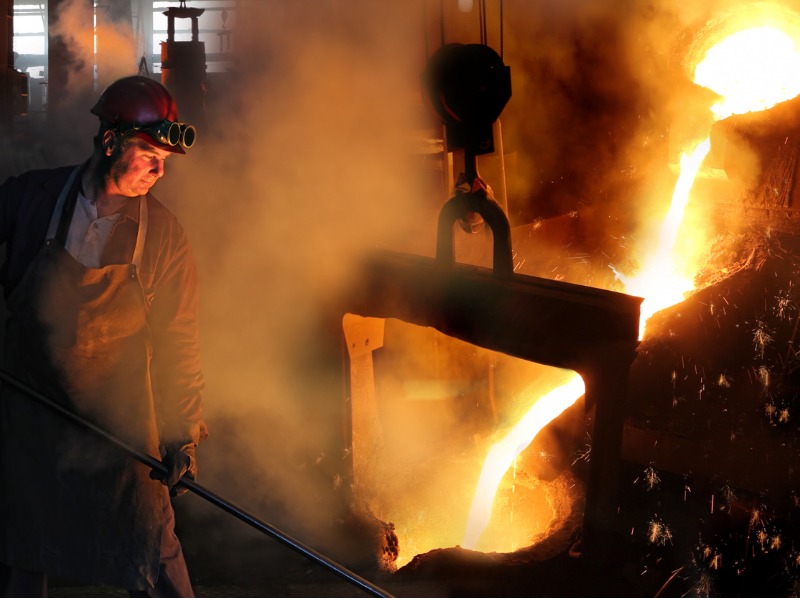Hot Work Environment
Working in a hot environment can be dangerous and uncomfortable. Employees are at risk of heat-related illnesses, and employers are at risk of lawsuits.
The heat can cause dehydration, fatigue, and even death. It’s important to take precautions to protect your employees from the dangers of working in a hot environment.
There are some industries and areas of work where heat is commonplace. Construction workers, landscapers, and agricultural workers need to be prepared for the heat when they work every day.
Working in hot environments can be dangerous if precautions are not taken before starting the job.
Know Your Rights as a Worker or Employee
If you believe you were assigned a task that posed an unreasonable risk to your health or safety, you must advise your supervisor and/or company personnel in charge of health and safety.
If you are still assigned to a hazardous work environment, you have a right to refuse the task. The law recognizes that some jobs are inherently more dangerous than others, but all employers must take precautions to minimize hazards. This includes providing the proper equipment, training, and communication between employees.
If you feel your employer has not provided a safe work environment, you can file a complaint with OSHA.
You may report dangerous conditions without fear of being fired. In addition, you are entitled to the following:
- Get workplace safety and health training in a language you understand.
- Ensure that machines are safe to work on.
- Get Proper PPE, such as gloves or a harness, etc.
- Working in a hazardous environment, be protected from toxic chemicals.
- You can request an OSHA inspection.
- You can report an injury or illness
Personal Heat Intolerance
Individuals with certain medical conditions may have difficulty working in hot environments. There are a few reasons why this might be the case, and these include:
- Age:
The risk of heat intolerance increases with age.
- Medications:
Certain drugs, such as beta-blockers, can impact your body’s temperature regulation.
- Chronic conditions:
Heart disease and diseases like COPD or diabetes can make it difficult to stay calm when the weather heats up.
- Weight:
The more weight you carry, the more energy is required to maintain a healthy internal temperature.
- Activities:
The type of work you do can increase your risk of heat intolerance. Heavy lifting and outdoor work can make staying cool in hot weather difficult.
- Lack of hydration:
Not drinking enough water makes it harder to maintain a normal internal temperature.
- Genetics:
Genetics may make some people more sensitive to heat. - Environmental Conditions:
Humidity and outdoor temperatures make a big difference.
- Clothing:
Wearing too little or the wrong clothes makes you more likely to overheat.
Heat-related illness Prevention
Employers should ensure that all employees are safeguarded from heat-related hazards. An occupational medical monitoring program can help identify workers at risk.
Employees should receive heat-related illness prevention training and talk to their physicians about whether they can safely work in the heat.
And while there are many measures you can take as an individual employee to protect yourself from a hot work environment, not everyone takes those precautions.
Tips to Protect Hot Work Environment
Here are some helpful tips about protecting yourself from a hot work environment…
- Know the signs of a heat-related illness and what to do.
Heat-related illnesses can occur when your body is unable to cool itself down in high temperatures. When that happens, the body’s temperature rises to dangerous levels, resulting in heat exhaustion or heat stroke. Both conditions can be fatal if not treated quickly.
If you feel any of these symptoms of a heat-related illness, you must get out of the heat and find shade immediately:
- Heat exhaustion:
This can occur when you are exposed to high temperatures and are not properly hydrated. It can happen to anyone, even people who are fit and healthy.
Symptoms:
Symptoms include feeling weak, faint, nauseous, dizzy, having a headache, and having a rapid heartbeat. If you are experiencing any of these symptoms, stop working and get in the shade immediately.
If you experience these symptoms, you are at a very high risk of death:
- Hot
- Dry skin that does not sweat
- Rapid
- Shallow breathing
- Confusion and/or delirium
If you are experiencing any of these symptoms, get to a doctor immediately.
- Start working in the shade and do not overexert yourself
The best thing you can do to protect yourself from a hot work environment is to start working in the shade.
- If no shade is available, consider bringing a tarp and creating one yourself.
- You will wear out much more quickly if there is nowhere to sit than if you can take breaks and sit down sometimes. If your job requires you to push yourself to the limit, you will likely go past your body’s ability to regulate itself, which could lead to a heat-related illness.
- If you are unsure how to push yourself or experiencing any signs of a heat-related illness, it’s best to get in the shade immediately and let someone know you are having trouble.
- Wear lightweight, breathable clothing
When working in a hot environment, you want to wear light clothing.
- Avoid wearing anything extremely thick that will trap heat.
- Make sure any fabric you are wearing is as breathable as possible
- Make sure your shoes are appropriate for the environment
- If you are walking on a lot of rough ground or through a lot of water, wear sturdy, thick-soled shoes
- If you are mostly walking on concrete or other smooth surfaces, you can wear lighter, thinner shoes
- Do not wear thick, heavy shoes that trap heat in your feet
- Stay well hydrated by drinking water constantly.
Even if you drink plenty of water while you are not working in a hot environment, you may not be getting enough while working in the heat.
- Drink water constantly to keep your body hydrated and cool enough to continue working.
- If you feel your body getting too hot, you should drink water as soon as possible.
- If you feel dizzy or nauseous, these are signs that you need water even sooner.
- Avoid drinking soda or other drinks that might dehydrate you.
- Bring a cooling bandana or towel with you
Bring a cooling bandana or towel if the location you are working in is too hot for you to continue without a break. By chilling the blood that is coursing through your veins, these things are intended to make you feel cooler.
They can be used to cool your face and neck as well. If your workplace doesn’t allow breaks, take advantage of any free time you do have by taking a break.
Sit in the shade and use the cooling bandana or towel to cool your neck and face down. You will be able to cool yourself down more quickly this way than if you are walking around with no shade and nowhere to sit down.
- Don’t forget the sunscreen!
Even though you are working in a hot environment, you still need to wear sunscreen. You can get sunburned just as quickly when working outdoors as you can indoors. If you forget sunscreen, you can get sunburn and damage your skin. Sunburned skin is much more likely to burn again in the future.
Make sure you’re wearing sunscreen that protects you from both UVA and UVB rays.
Final Words
While working in a hot environment is challenging, it is important to remember that it is also dangerous. You can protect yourself from a hot work environment by following the tips above.
Remember, the best way to protect yourself from a hot work environment is to start working in the shade. If no shade is available, consider bringing a tarp and creating one yourself. In addition, to ensure that your work environment is safe and secure from potential site hazards, get yourself enrolled in OSHA Outreach Courses and complete your OSHA certification.
Stay hydrated by drinking water constantly, and don’t forget the sunscreen. By following these tips, you can protect yourself from a hot work environment and stay safe while you are at work.





